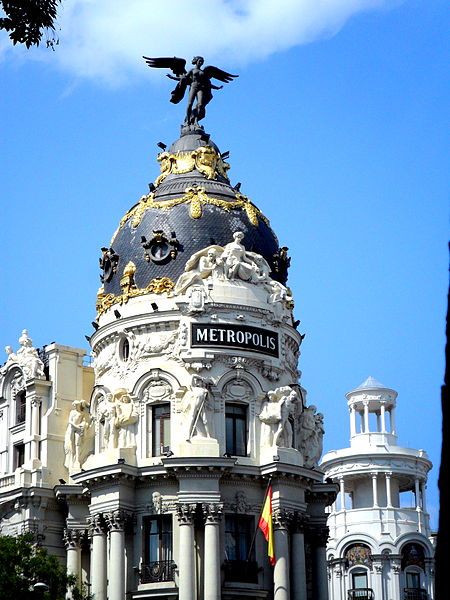Valencia: The Perfect City to Learn Spanish
Valencia, a coastal gem in Spain, is not only famous for its beautiful beaches and lively festivals but also as an exceptional destination for those wanting to learn Spanish. The city is filled with cultural heritage, modern attractions, and hidden corners that make it an ideal place for language learners seeking a rich and immersive experience. At Estudia, we specialize in offering Spanish courses online and provide free assistance to help you find the best destination and course in Spain tailored to your needs. Here are eight lesser-known yet fascinating spots in Valencia that make it an exceptional place for Spanish learners.
1. La Iglesia de San Nicolás de Bari
Often referred to as the “Sistine Chapel of Valencia,” the Church of San Nicolás de Bari is a stunning display of Gothic and Baroque art. Its intricately painted ceilings and walls are a hidden gem for those who want to dive deep into Spanish religious art and history. By visiting this church, you can learn about Valencia’s spiritual heritage, enhancing your Spanish vocabulary with terms related to art, architecture, and religion. It’s also a quiet place to reflect and practice your Spanish in an inspiring setting.
2. Baños del Almirante
The Baños del Almirante, or Admiral’s Baths, date back to the 14th century and offer a glimpse into Valencia’s Moorish past. These historic Arabic baths are an architectural treasure hidden in the city center. Walking through its rooms gives you a sense of how daily life was centuries ago. Engaging with the history of the Baños del Almirante not only provides historical context but also expands your knowledge of Spanish culture and language, especially terms related to ancient customs and architecture.
3. Torres de Quart
The Torres de Quart are a pair of Gothic towers that once served as part of Valencia’s medieval defense system. Lesser-known than the more famous Torres de Serranos, they are steeped in history, including marks left by Napoleonic cannon fire. Climbing the towers offers a panoramic view of Valencia and an opportunity to explore the city’s historical vocabulary. It’s a great place to discuss Spanish history and military architecture while improving your language skills in a unique environment.
4. El Centro Cultural Contemporáneo del Carmen
Nestled in the El Carmen district, this cultural center is an eclectic mix of contemporary art, history, and architecture. It hosts a variety of exhibitions, performances, and events that showcase modern Spanish culture. The center is located in a former convent, adding a layer of historical depth. Visiting El Centro Cultural Contemporáneo del Carmen allows you to engage with contemporary Spanish art and culture while enriching your vocabulary with modern expressions and artistic terminology.
5. El Parque Nacional de la Albufera y las Playas de El Saler
Located just a short drive from the city, the Albufera Natural Park is a haven of biodiversity, with its large freshwater lagoon and surrounding rice fields. It’s a place of natural beauty where you can learn about traditional Valencian agriculture and the origins of Spain’s famous paella. The nearby beaches of El Saler provide a peaceful setting away from the more crowded city beaches, making them perfect for quiet study and practice sessions. Here, you can engage with locals, practice conversational Spanish, and immerse yourself in the natural vocabulary of Spain’s coastal regions.
6. Las Casas Modernistas de El Cabañal
El Cabañal is a historic neighborhood known for its colorful modernist houses, which reflect Valencia’s architectural evolution in the 19th and early 20th centuries. Unlike the more visited parts of Valencia, this neighborhood retains its traditional charm, with narrow streets and beautiful facades. Strolling through El Cabañal offers a unique glimpse into Valencia’s past and present, providing a rich context for learning architectural and cultural Spanish terms. Engaging with the locals here can also give you a sense of the traditional Valencian lifestyle and dialects.
7. Jardines de Monforte
The Jardines de Monforte are one of Valencia’s most beautiful and tranquil spots, yet they remain relatively unknown to many visitors. This neoclassical garden is filled with statues, fountains, and well-manicured hedges, offering a peaceful retreat in the heart of the city. It’s an ideal place to study, practice Spanish in a serene environment, or simply take a break from the hustle and bustle of city life. The gardens provide an excellent setting for practicing language related to nature, art, and relaxation.
8. Museo Hortensia Herrero
A lesser-known museum in Valencia, the Museo Hortensia Herrero focuses on contemporary art and is housed in a beautifully restored historical building. It presents a different side of Spanish culture, blending modern artistic expression with Valencia’s rich history. Visiting this museum can inspire discussions in Spanish about contemporary art trends, modern culture, and the impact of art on society. It’s a place where you can immerse yourself in the language of modern artistic expression.
Valencia offers a unique blend of history, culture, and modernity, making it an exceptional city for learning Spanish. Each of these hidden gems provides a different context in which to immerse yourself in the language while exploring the rich tapestry of Spanish culture. At Estudia, we are here to make your Spanish learning journey in Spain as enriching and enjoyable as possible. Contact us today for free assistance in finding the perfect course and destination that aligns with your preferences and needs.






